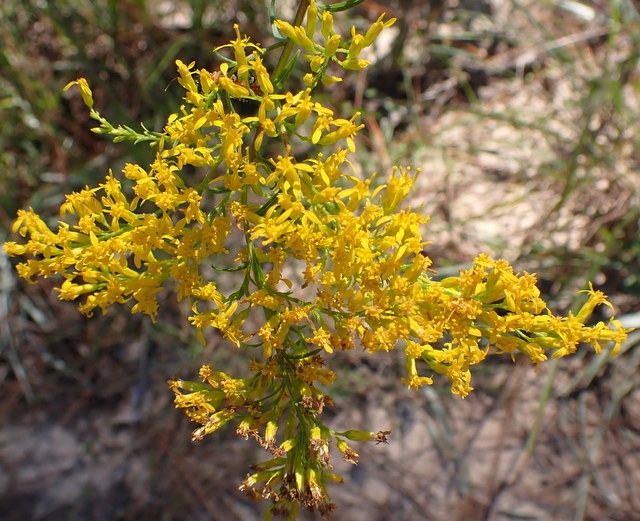Sweet Goldenrod
(Solidago odora)
Sweet Goldenrod (Solidago odora)
/
/

mfeaver
CC BY 4.0





















































Estimated Native Range
Summary
Sweet Goldenrod is valued for its aromatic foliage and bright, elongated clusters of yellow flowers that add color to the garden late in the growing season. It is used in wildflower gardens, naturalized areas, and as a border plant. The plant’s drought tolerance and adaptability to various soil conditions make it a low-maintenance choice for gardeners. Additionally, the leaves can be harvested to make a flavorful tea. While generally pest-free, it can be susceptible to rust and leaf spot diseases. Sweet Goldenrod should be planted with care as it can spread aggressively by rhizomes, potentially becoming invasive in some conditions.CC BY-SA 4.0
Plant Description
- Plant Type: Herb
- Height: 2-4 feet
- Width: 1-2 feet
- Growth Rate: Moderate
- Flower Color: Yellow
- Flowering Season: Summer, Fall
- Leaf Retention: Deciduous
Growth Requirements
- Sun: Full Sun, Part Shade
- Water: Low, Medium
- Drainage: Fast, Medium, Slow
Common Uses
Bee Garden, Bird Garden, Butterfly Garden, Deer Resistant, Drought Tolerant, Edible*Disclaimer: Easyscape's listed plant edibility is for informational use. Always verify the safety and proper identification of any plant before consumption., Fragrant, Hummingbird Garden, Low Maintenance, Rabbit Resistant, Showy Flowers, Street Planting
Natural Habitat
native to open woodlands, meadows, and prairies of the Eastern United States
Other Names
Common Names: Sweet Goldenrod , Anise-Scent Goldenrod , Fragrant Goldenrod , Anise-Scented Goldenrod , Anis-Goldrute
Scientific Names: Solidago odora , Solidago odora f. odora , Solidago suaveolens , Solidago puncticulata , Solidago odora f. inodora , Solidago odora var. inodora , Solidago retrorsa , Aster odorus
GBIF Accepted Name: Solidago odora Aiton